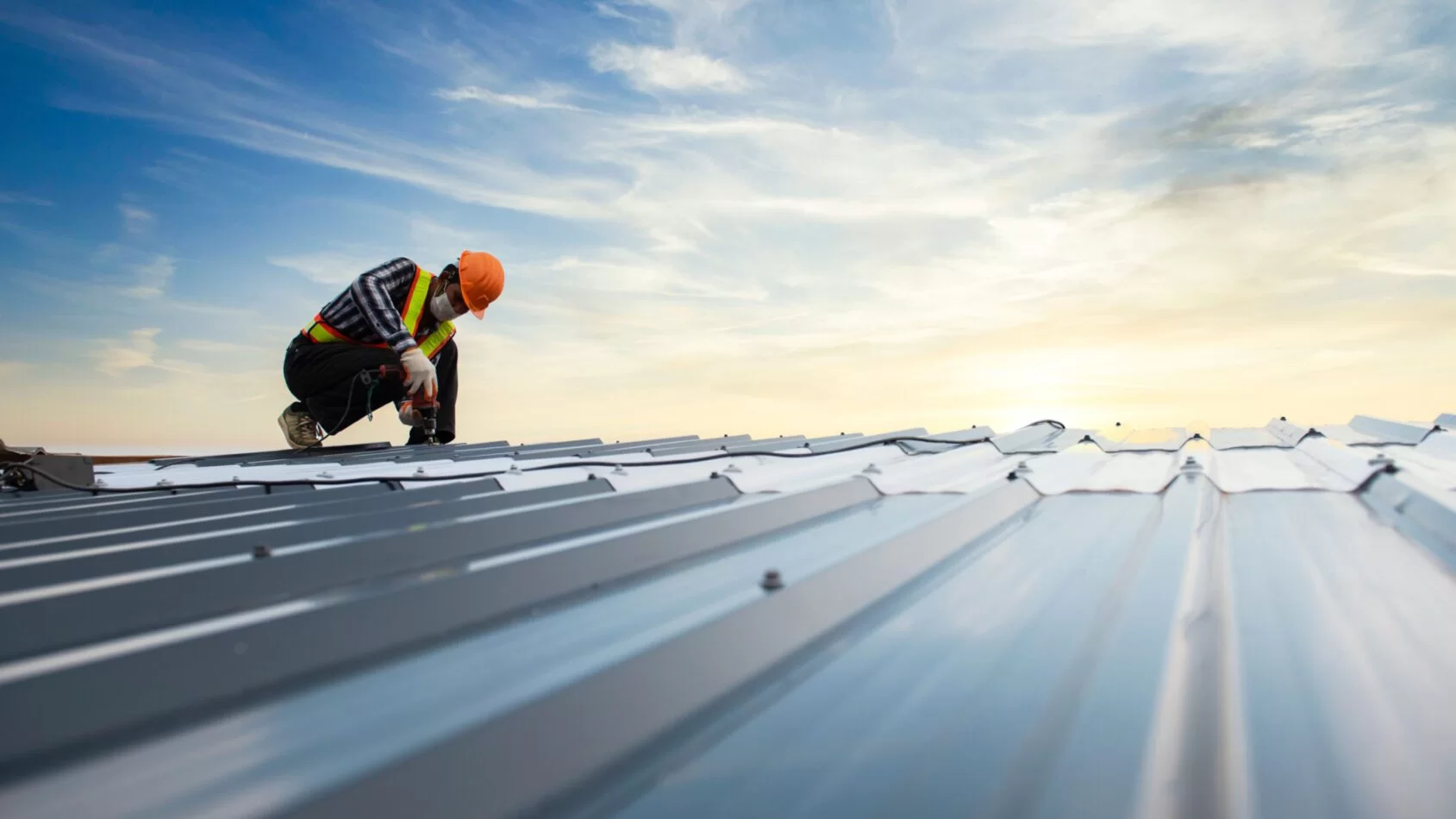Home Improvement
The Complete Guide to Roofing Systems: Materials, Maintenance, and Long-Term Performance

A well-designed and properly maintained roof is one of the most vital components of any structure. More than just a top layer, it serves as a first line of defense against the elements and plays a crucial role in a building’s energy efficiency, comfort, and overall value. Understanding the ins and outs of modern roofing systems is essential for homeowners, contractors, and real estate investors alike.
Whether you are considering a new roof, evaluating repair options, or planning long-term maintenance, this in-depth guide will help you make informed decisions about materials, installation practices, and performance expectations.
The Purpose of a Roof Beyond Shelter
At its core, the roof is a barrier. It protects interiors from rain, snow, wind, sun, and extreme temperatures. But its role extends well beyond basic protection. A thoughtfully designed roofing system also:
- Helps regulate indoor temperature through insulation and ventilation.
- Protects the structural components of the home from water damage.
- Enhances property value and curb appeal.
- Facilitates efficient drainage and prevents water pooling.
- Supports the installation of solar panels, skylights, or ventilation systems.
Every aspect of the roof—from the framing to the final layer—contributes to these outcomes. Ignoring even one detail can lead to long-term issues, such as mold, rot, or structural failure.
Components of a Roofing System
A high-performance roof is more than just shingles or tiles. It includes several layers, each serving a different function:
- Decking (Sheathing): Usually made from plywood or OSB, this base layer supports all other roofing materials.
- Underlayment: A waterproof or water-resistant barrier that protects the decking from moisture.
- Flashing: Thin metal pieces installed around joints, vents, and chimneys to direct water away from sensitive areas.
- Ventilation: Intake and exhaust vents regulate attic temperature and moisture.
- Insulation: Placed beneath the decking, insulation helps retain heat in winter and block it in summer.
- Surface Material: This is the visible outer layer, such as shingles, metal, slate, or tile, that takes the brunt of weather exposure.
When all these components work together correctly, the result is a durable, weather-resistant, and efficient roofing system.
Types of Roofing Materials
Choosing the right surface material is crucial to your roof’s longevity and performance. Here are the most commonly used materials in modern construction:
1. Asphalt Shingles
The most widely used residential roofing material due to affordability and ease of installation. They come in two main types:
- 3-tab shingles: Lightweight and economical, typically lasting 15–20 years.
- Architectural shingles: Thicker and more durable, with a lifespan of 25–30 years.
They are available in many colors and styles, making them versatile for various designs.
2. Metal Roofing
Known for durability and low maintenance, metal roofs can last 40–70 years depending on the material (steel, aluminum, copper). They reflect solar heat, which can reduce cooling costs in warmer climates.
3. Clay and Concrete Tiles
Often used in Mediterranean or Spanish-style architecture, these tiles are extremely durable—often lasting over 50 years—but they are heavy and may require reinforced support.
4. Slate
Natural slate tiles are beautiful and long-lasting (75–100 years), but they are expensive and require expert installation due to their weight and fragility.
5. Wood Shingles and Shakes
Made from cedar, redwood, or pine, wood shingles offer a natural, rustic appearance. However, they require more maintenance and are less fire-resistant unless treated.
Choosing the Right Roofing System
Selecting a roofing system involves more than picking a material. Consider these factors:
- Climate: Areas prone to high winds, snow, or heavy rain require specific materials and installation techniques.
- Budget: Balance short-term affordability with long-term maintenance and replacement costs.
- Design Goals: Architectural style and color palette may influence your choice.
- Weight: Heavy materials like slate or tile may need additional structural support.
- Energy Efficiency: Light-colored or reflective materials reduce cooling loads.
Always consult with a professional contractor who can assess your structure and suggest appropriate materials.
The Installation Process
Proper installation is key to the effectiveness and longevity of any roofing system. While the exact steps vary depending on the material, a standard process includes:
- Inspection and Planning: Evaluate the existing structure, ventilation needs, and materials.
- Tear-Off (if needed): Remove old materials and inspect decking for damage.
- Underlayment and Flashing: Install protective layers and waterproof barriers.
- Ventilation and Insulation: Ensure proper air flow and temperature regulation.
- Material Installation: Lay down shingles, metal sheets, or tiles following manufacturer guidelines.
- Final Inspection: Verify all seals, edges, and flashing are correctly installed.
Hiring experienced professionals ensures that manufacturer warranties remain valid and the work complies with building codes.
Common Roofing Problems and Warning Signs
Even the best roof needs periodic inspection. Watch for the following signs that could indicate trouble:
- Leaks or water stains on ceilings or walls
- Missing, cracked, or curling shingles
- Sagging rooflines or dips in the surface
- Moss or algae growth
- Gutter granules or debris from shingles
- Unusual indoor temperatures or high energy bills
Catching issues early can help avoid extensive and costly damage later. Regular inspections—especially after severe weather—are critical.
Roof Maintenance Tips
Proactive maintenance can extend the life of your roofing system by years or even decades. Here are some best practices:
- Inspect Annually: Examine the roof for damage or wear at least once a year and after major storms.
- Clean Gutters: Clogged gutters can lead to water backing up onto the roof.
- Remove Debris: Clear branches, leaves, and moss that can trap moisture or cause damage.
- Trim Trees: Prevent overhanging branches from damaging the roof during storms.
- Check Attic Ventilation: Poor airflow can lead to heat buildup or moisture problems.
- Seal Flashing: Ensure flashing is intact around chimneys, skylights, and vents.
Hiring a roofing professional for a periodic checkup can catch subtle issues early and ensure everything is working as intended.
When to Repair vs. Replace
A key decision many homeowners face is whether to repair damage or fully replace the roof. Here are guidelines to help you decide:
- Repair if the damage is localized (a few missing shingles, minor flashing issues).
- Replace if the roof is over 20–30 years old or shows widespread damage.
- Repair if your roof has a strong warranty and the problem is still covered.
- Replace if you want to upgrade to a more energy-efficient or longer-lasting material.
An inspection from a trusted contractor can provide clarity and help you avoid unnecessary expense.
Sustainable Roofing Options
As environmental awareness grows, many homeowners are turning to eco-friendly roofing choices:
- Cool Roofs: Reflect more sunlight and absorb less heat, improving energy efficiency.
- Green Roofs: Use live vegetation to improve insulation and reduce runoff.
- Recyclable Materials: Metal and rubber roofing options can often be recycled.
- Solar Shingles: Generate electricity while serving as roofing material.
These options may come with higher upfront costs but offer long-term savings and sustainability benefits.
Final Thoughts
The roof is one of the most vital components of a building, impacting everything from energy efficiency and safety to resale value and structural stability. Investing in quality materials, professional installation, and regular maintenance ensures that your roofing in Rockland county system performs reliably for decades.
Whether you’re tackling a full replacement or simply keeping up with seasonal care, understanding your roof gives you a major advantage. As technologies evolve and more sustainable materials become available, homeowners have more choices than ever for building smarter, more resilient roofing systems.















